
The Sagrada Familia, an architectural marvel designed by Antoni Gaudí, stands as a testament to creativity and devotion in the heart of Barcelona. Its intricate details, towering spires, and unique blend of styles make it one of the most visited landmarks in the world, captivating millions of tourists each year.
In this exploration of Sagrada Familia Facts: Unveiling the Enigmatic Masterpiece of Barcelona, we delve into the fascinating history, architectural innovations, and spiritual significance of this extraordinary basilica. From its construction that began in 1882 to its anticipated completion, the Sagrada Familia continues to inspire awe and curiosity among visitors and architecture enthusiasts alike.
Sagrada Familia: A Historical Overview of Gaudí's Vision
The vision of Antoni Gaudí for the Sagrada Familia was deeply rooted in his passion for nature and spirituality. He believed that architecture should reflect the natural world, which is evident in the basilica's organic forms and intricate details. Gaudí famously stated, "My client is not in a hurry," referring to God, which illustrates his commitment to creating a masterpiece without a strict deadline. This approach allowed him to innovate and experiment with various styles, blending Gothic and Art Nouveau elements.
Construction of the Sagrada Familia began in 1882, and Gaudí took over the project in 1883, transforming the initial design significantly. His work on the basilica incorporated unique techniques such as using hyperboloid structures and parabolic arches, which not only enhanced the aesthetic appeal but also improved the stability of the building. Gaudí's innovative approach paved the way for future architectural advancements, making the Sagrada Familia a symbol of modernist architecture.
Despite Gaudí’s untimely death in 1926, the construction of the Sagrada Familia continued, driven by his original vision and meticulous plans. The project faced numerous challenges, including financial constraints and the disruptions caused by the Spanish Civil War. Today, skilled architects and artisans strive to realize Gaudí's dream, with an estimated completion date set for 2026, marking the centenary of his passing.
- Key Milestones in Sagrada Familia's History:
- 1882: Construction begins under architect Francisco de Paula del Villar.
- 1883: Antoni Gaudí takes over the project.
- 1926: Gaudí dies, leaving the project unfinished.
- 2026: Projected completion date for the basilica.
Architectural Marvels: Key Features of the Sagrada Familia
The Sagrada Familia showcases a plethora of architectural marvels that reflect Gaudí's genius and passion for nature. Among its most striking features are the twelve towering spires, each symbolizing one of the apostles, which are designed to reach a height of 172.5 meters. This ambitious elevation emphasizes the basilica's aspiration to reach the heavens and demonstrates Gaudí's innovative approach to verticality in architecture.
Another remarkable aspect of the Sagrada Familia is its intricate facades. The Nativity Facade, adorned with biblical scenes and organic motifs, celebrates the birth of Christ, while the Passion Facade, with its stark and dramatic forms, conveys the suffering of Jesus. These contrasting styles highlight Gaudí's ability to express profound spiritual themes through architectural elements.
The interior of the Sagrada Familia is equally breathtaking, featuring columns designed to resemble trees that branch out to support the vaulted ceiling. This unique design creates a forest-like atmosphere, allowing natural light to filter through the stained glass, casting colorful patterns on the stone surfaces. The innovative use of light and space reflects Gaudí's desire to harmonize architecture with the natural world.
Furthermore, the basilica employs hyperboloid forms and parabolic arches, which not only enhance its aesthetic appeal but also contribute to structural integrity. These techniques allow the building to withstand external forces while maintaining its intricate beauty. As the Sagrada Familia nears completion, it stands as a testament to Gaudí's visionary approach to modernist architecture and his unwavering commitment to creating a divine masterpiece.
The Symbolism Behind Sagrada Familia's Unique Design Elements
The Sagrada Familia's design is rich in symbolism, with each element carefully chosen to convey deeper meanings. Gaudí's inspiration from nature is evident in the basilica's organic shapes, which reflect the forms of trees and plants. This connection to the natural world serves to remind visitors of the divine creation, as well as the spiritual journey that the basilica represents.
One of the most striking features is the twelve spires, each representing one of the apostles. This verticality not only draws the eye upward but also symbolizes the aspiration of humanity to connect with the divine. The interplay of light and shadow within the basilica creates an ethereal atmosphere, enhancing the spiritual experience for those who enter.
- Key Symbolic Elements of the Sagrada Familia:
- Twelve Spires: Represent the apostles and symbolize the connection to the divine.
- Tree-like Columns: Reflect Gaudí's vision of nature, creating a forest-like interior.
- Facades: The Nativity Facade celebrates birth, while the Passion Facade depicts suffering, illustrating the duality of life.
Moreover, the use of hyperboloid and parabolic shapes throughout the structure not only enhances its aesthetic appeal but also represents the harmony between geometry and nature. These forms allow for greater stability, symbolizing the strength of faith. As visitors explore the Sagrada Familia, they are invited to reflect on the interplay of art and spirituality that defines Gaudí's masterpiece.
Exploring the Construction Timeline of the Sagrada Familia
The construction timeline of the Sagrada Familia is a remarkable journey that reflects both ambition and perseverance. Begun in 1882, the project initially faced a series of challenges, including shifting designs and funding issues. Antoni Gaudí took over the project in 1883, radically altering the original plans and infusing the basilica with his unique artistic vision. His dedication transformed the Sagrada Familia into a symbol of modernist architecture, where every detail was meticulously crafted to reflect his passion for the divine.
Over the decades, the progression of the Sagrada Familia has been marked by significant milestones. The construction was heavily impacted by external events such as the Spanish Civil War, which led to prolonged delays and resource scarcity. Despite these setbacks, the work continued, with architects and craftsmen striving to adhere to Gaudí’s principles and designs. As of today, the project is nearing its anticipated completion date of 2026, coinciding with the centenary of Gaudí's death.
Various phases of construction have introduced advancements in technology and design, allowing builders to address the intricate details of Gaudí's vision. For instance, innovative methods have been employed to recreate his complex geometrical forms, ensuring structural integrity and aesthetic beauty. The use of modern machinery has facilitated the careful crafting of the basilica's intricate facades and soaring spires, bringing Gaudí’s dream closer to reality.
As we explore the construction timeline, it's crucial to recognize the collaborative effort that has spanned over a century. A dedicated team of architects and artisans has worked tirelessly, preserving Gaudí's legacy while adapting to contemporary techniques. Their commitment to completing the Sagrada Familia not only honors the architect's vision but also stands as a testament to the enduring allure of this enigmatic masterpiece in the heart of Barcelona.
Visitor's Guide: Best Tips for Experiencing the Sagrada Familia
To fully appreciate the Sagrada Familia, plan your visit during off-peak hours, such as early mornings or late afternoons. This can significantly enhance your experience by allowing you to explore the basilica with fewer crowds. Additionally, booking your tickets in advance online is highly recommended, as it not only saves time but also guarantees your entry to this iconic landmark.
Consider taking a guided tour to gain deeper insights into Gaudí’s artistic vision and the architectural significance of the Sagrada Familia. Knowledgeable guides can share intriguing facts and stories that bring the basilica to life, enriching your visit. Alternatively, audio guides are available for those who prefer a self-paced exploration while still accessing valuable information about the basilica's features.
Don't forget to explore the surrounding areas of the Sagrada Familia. The nearby parks and plazas offer stunning viewpoints to admire the basilica's unique facades. For the best photo opportunities, visit the Plaça de Gaudí or the Park Güell, both of which provide fantastic backdrops for capturing the grandeur of this enigmatic masterpiece.
Lastly, take your time to soak in the interior's breathtaking beauty. The play of light through the stained glass windows creates a mesmerizing atmosphere, making it worthwhile to sit quietly and reflect. Ensure you allocate enough time to wander through the various spaces within the basilica, appreciating the intricate details that showcase Gaudí's genius and the spiritual essence of the Sagrada Familia.
The Cultural Significance of Sagrada Familia in Modern Barcelona
The Sagrada Familia holds profound cultural significance in modern Barcelona, representing not only an architectural wonder but also a symbol of the city's identity. As a UNESCO World Heritage Site, it draws millions of visitors each year, enhancing Barcelona's status as a leading cultural destination. The basilica serves as a focal point for artistic expression, community engagement, and educational initiatives, making it a vital part of the city's fabric.
Moreover, the Sagrada Familia has become a source of inspiration for local artists, musicians, and writers, who often incorporate its elements into their work. The basilica's unique design and rich history foster a sense of pride among residents, creating a shared cultural narrative. In recent years, various events and exhibitions have been organized around the site, showcasing its relevance in contemporary art and architecture while celebrating its historical roots.
- Key Aspects of Cultural Significance:
- Symbol of Barcelona's identity and modernist heritage.
- Influences local art and cultural expressions.
- Engages the community through events and educational programs.
As the Sagrada Familia approaches its completion, it continues to evolve, reflecting changes in societal values and artistic trends. This dynamic relationship between the basilica and the city underscores its role not only as a historical monument but also as a living entity that embodies the spirit of modern Barcelona. Its ongoing construction symbolizes hope and innovation, ensuring that the Sagrada Familia remains a pivotal landmark for generations to come.
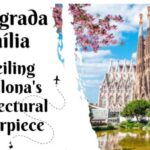 The Enchanting Saga of Sagrada Familia: Unveiling the Architectural Masterpiece
The Enchanting Saga of Sagrada Familia: Unveiling the Architectural Masterpiece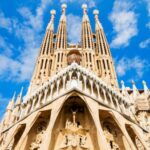 Where is Sagrada Familia Located in Barcelona: A Guide to Gaudi's Masterpiece
Where is Sagrada Familia Located in Barcelona: A Guide to Gaudi's MasterpieceIf you want to know other articles similar to Sagrada Familia Facts: Unveiling the Enigmatic Masterpiece of Barcelona you can visit the category WHERE YOU CAN GO.
Leave a Reply


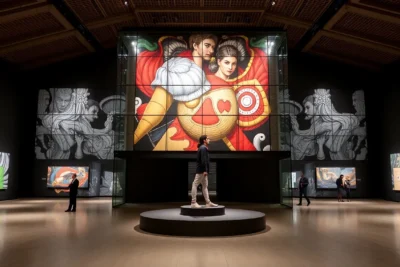
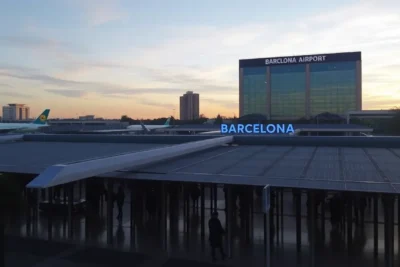

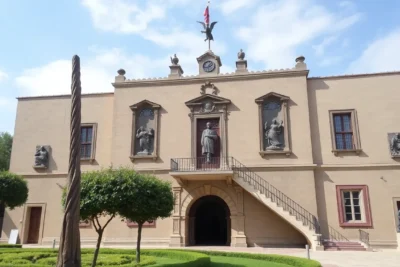

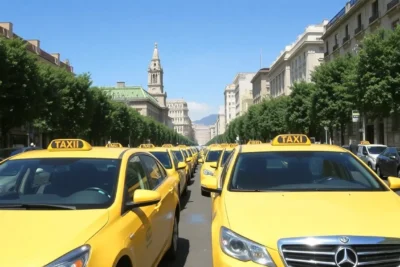
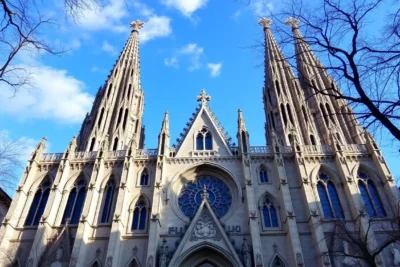

Read more!